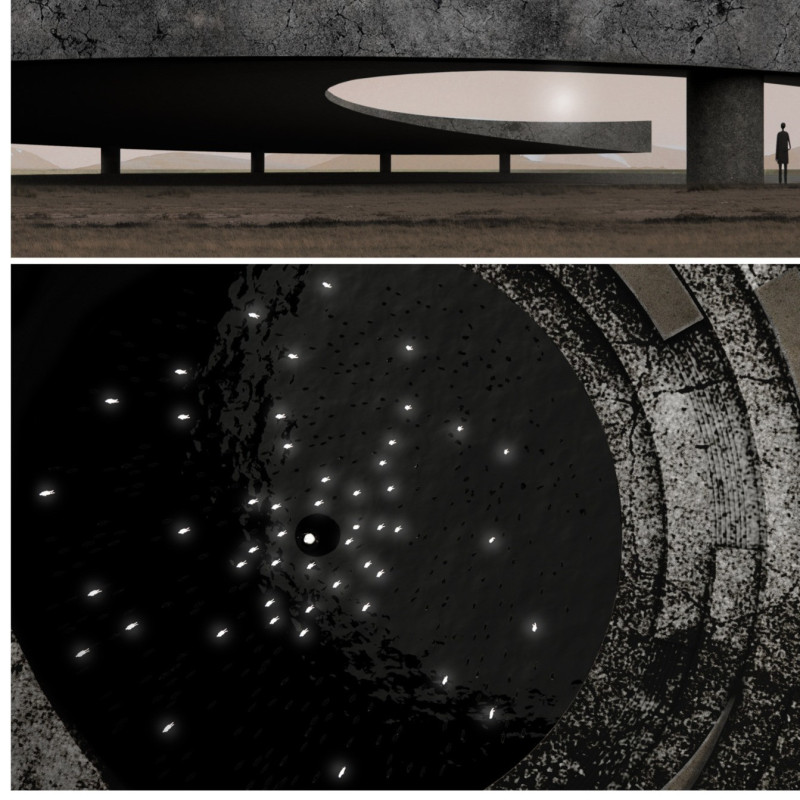5 key facts about this project
This project represents an innovative blend of modern architecture and practical design, reflecting an ethos that prioritizes versatility and durability. The structure's function is clearly defined, whether serving as a cultural hub, community center, or residential space. Each element of the design has been meticulously considered to ensure maximum utility without compromising visual appeal.
The site planning exhibits careful consideration of the surrounding environment, taking advantage of natural light and enhancing the visual connection between indoor and outdoor spaces. Large windows complement open layouts, allowing occupants to enjoy vistas that encompass the local scenery. This integration fosters a sense of continuity with nature, promoting both well-being and comfort. The landscaping has been thoughtfully designed to enhance the architectural form, featuring native plants that require little maintenance and contribute to biodiversity.
In terms of aesthetic composition, the architectural design utilizes a combination of warm materials that create a welcoming atmosphere. Natural wood, concrete, and glass are employed to forge a visual harmony that resonates with the environment. The choice of these materials not only provides structural integrity but also reflects an intention to minimize the ecological footprint, reinforcing a commitment to sustainability. The use of reclaimed wood for interior finishes adds a layer of history and character, enriching the spatial narrative while promoting ethical sourcing.
Unique design approaches are evident throughout the project, particularly in the way spaces are articulated. The layout is designed to foster interaction among users, featuring communal areas that encourage collaboration and connectivity. These spaces are punctuated by strategically placed nooks and alcoves that offer privacy and quiet, creating a balanced environment where both outreach and introspection can coexist.
Special attention has been given to the building's energy efficiency. Innovative engineering solutions such as passive solar design techniques and high-performance insulation contribute to a reduced energy demand, aligning with modern sustainability goals. Additionally, rainwater harvesting systems and solar panels hint at a forward-thinking approach to resource management, ensuring that the architecture remains responsive to both its occupants' needs and ecological responsibilities.
The architectural plans reflect a detailed understanding of spatial flow, guiding users through the building with ease and intention. Architectural sections illustrate how the vertical relationships between spaces enhance functionality and light distribution, creating a multi-dimensional experience. The design integrates various scales and textures, leading to a rich sensory experience that supports the project's overall vision.
Through this project, the design team has embraced an ethos of sharable space, crafting an environment that nurtures interaction and inclusivity. The result is not merely a structure; it is a vibrant community asset designed to adapt over time while stimulating the cultural and social fabric of the area.
For a more in-depth exploration of the architectural plans, architectural sections, and architectural ideas that embody this project, readers are encouraged to delve further into the presentation materials available. This exploration will provide a richer context and understanding of the thoughtful design choices that characterize the project.


 Charles Will Teodosio Bauyon,
Charles Will Teodosio Bauyon,  Ren Kins Santiago De Lara
Ren Kins Santiago De Lara 




















